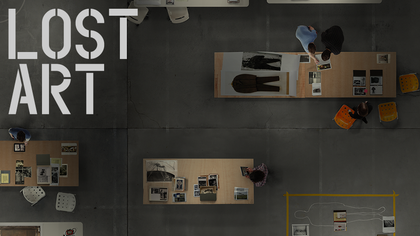Bent Propeller 1970
The devastating terrorist attacks on the World Trade Center in New York on 11 September 2001killed nearly 3,000 people and dramatically affected America’s relationships with the rest of the world. The shock caused by the event was profound and in the immediate aftermath inevitably little attention focused on the art that was lost with the collapse of the buildings. But the attacks on theTwin Towers and the accompanying damage to the surrounding edifices in the World Trade Centre complex also destroyed large numbers of artworks housed in and around the skyscrapers in this vibrant business area. The exact figure of destroyed works is not known – records were lost along with the works in the corporate offices, private storage vaults and artist studios within the complex – but estimates put the combined value as high as $100 million. A spokesman for the Art Loss Registry described it as ‘probably the largest single art loss in history’.
Among the many pieces destroyed, one public work in particular became symbolic of the cultural loss suffered in the attacks, and of the efforts to mitigate the damage in the weeks that followed: Alexander Calder’s Bent Propeller 1970. Commissioned for the World Trade Center Plaza while the buildings were still being constructed, the seven-metre high steel sculpture by the American artist was broken and crushed under the debris. But its distinctive red colour offered hope for a period that its pieces could be identified among the building rubble.
In the aftermath of the attacks some New Yorkers began to visit the site regularly to provide support for the rescue workers. One of these was Victoria Leacock, a friend of Alexander Rower, grandson of Alexander Calder. Rower asked Leacock to help recover the work and they made up fliers to hand out to the workers, reading – with patriotic emphasis – ‘Please Help Recover and Preserve Famous AMERICAN SCULPTURE’.
After a few weeks, when there was no hope of finding more survivors, workers clearing the site tried to support efforts to find parts of Calder’s sculpture in the hope that enough would be found to allow it to be restored. In all, about 40 per cent of the sculpture was recovered but this proved not enough to restore the work.

